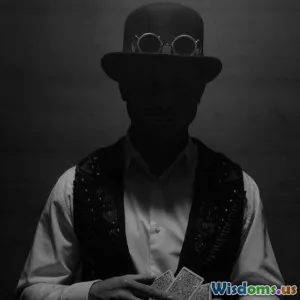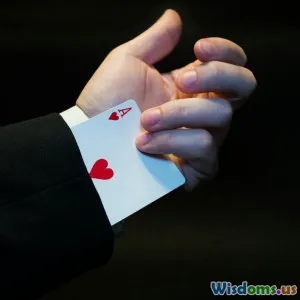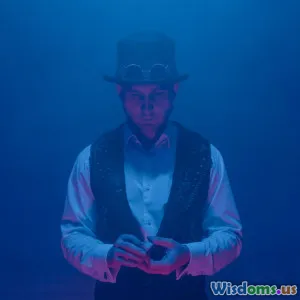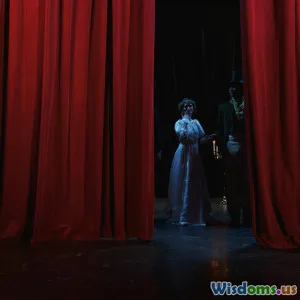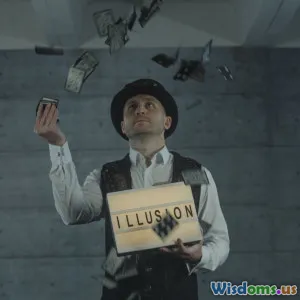
The Secrets of Stage Illusions
6 min read Uncover the fascinating world of stage illusions and the secrets that make them captivating performances. (0 Reviews)
The Secrets of Stage Illusions
Stage illusions have captivated audiences for centuries, blending art, psychology, and showmanship into an unforgettable experience. From the grand stages of Las Vegas to intimate magic shows in small theaters, the world of magic is filled with secrets that keep audiences guessing. In this article, we delve into the intriguing world of stage illusions, exploring their history, techniques, and the psychological principles that underpin these astonishing performances.
A Brief History of Stage Illusions
The history of stage illusions can be traced back to ancient civilizations, where magicians dazzled crowds with tricks that seemed to defy the laws of nature. The ancient Egyptians used illusion to entertain, while in the Middle Ages, magic shows began to take on more structured forms. The 19th century marked a significant turning point with the rise of famous magicians like Harry Houdini and Robert-Houdin, who elevated magic to a theatrical art form.
Houdini's escape acts and elaborate stage setups captivated audiences and set the standard for modern magic shows. The advent of vaudeville and later television brought magic into the homes of millions, with performers like David Copperfield and Penn & Teller pushing the boundaries of illusion.
The Mechanics of Magic
At the core of every illusion is a carefully crafted technique designed to manipulate audience perception. Some common techniques include:
-
Misdirection: This is perhaps the most essential tool in a magician's arsenal. By directing the audience's attention away from the method or secret of the trick, magicians create a moment of wonder. For instance, a magician might gesture dramatically with one hand while performing the actual action with the other.
-
Sleight of Hand: This technique involves manual dexterity and skill to perform tricks that appear magical. Card tricks often rely on sleight of hand to manipulate cards without the audience noticing.
-
Illusion Devices: Many stage illusions use props or mechanical devices to create effects that seem impossible. From disappearing boxes to levitation devices, these tools are meticulously designed to aid in the magician's performance.
-
Psychological Techniques: Understanding human psychology is crucial for magicians. They often employ principles of suggestion, expectation, and surprise to enhance the impact of their illusions. By predicting audience reactions, they can craft moments of astonishment.
The Role of Presentation
While the mechanics of magic are vital, the presentation is equally important. A magician’s performance style, stage presence, and ability to engage the audience can elevate a simple trick into a memorable experience. Charisma and storytelling skills help establish a connection with the audience, making the illusion more impactful.
Iconic Performances
Some stage illusions have become legendary due to their theatrical presentation and the skill involved. For example, David Copperfield’s “Death Saw,” where he appears to be sawed in half, combines elaborate staging and audience participation to create a thrilling experience.
Similarly, Penn & Teller's unique blend of humor and magic challenges conventional expectations, often revealing parts of their tricks while still maintaining an air of mystery. Their performances illustrate how breaking the fourth wall can enhance audience engagement.
The Future of Stage Illusions
As technology advances, the world of magic continues to evolve. Digital illusions and virtual reality are beginning to play a significant role in modern performances. Magicians are now integrating technology to create immersive experiences that were once unimaginable. The use of projection mapping, augmented reality, and even artificial intelligence are changing the landscape of magic.
Conclusion
Stage illusions are a rich blend of history, psychology, and artistry. As we uncover the secrets behind these captivating performances, we gain a deeper appreciation for the skill and creativity involved. Whether you're a budding magician or simply an admirer of the art, understanding the mechanics and psychology of stage illusions can enhance your experience and appreciation of this timeless craft. The magic continues to evolve, and with it, the secrets of the stage remain tantalizingly close yet forever out of reach.
Rate the Post
User Reviews
Popular Posts











